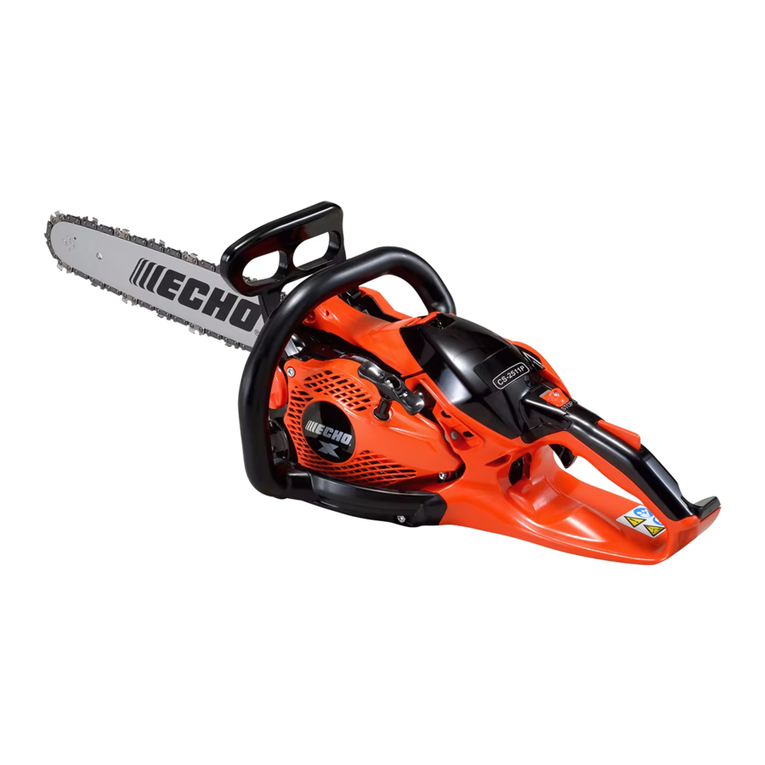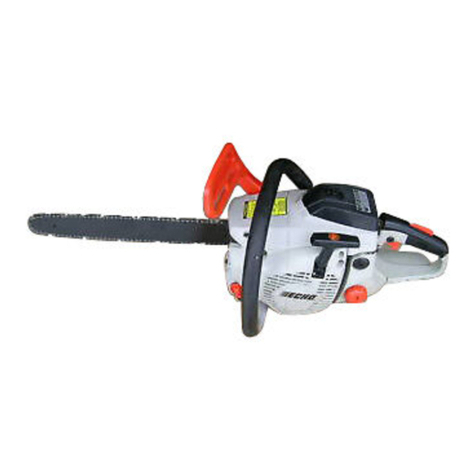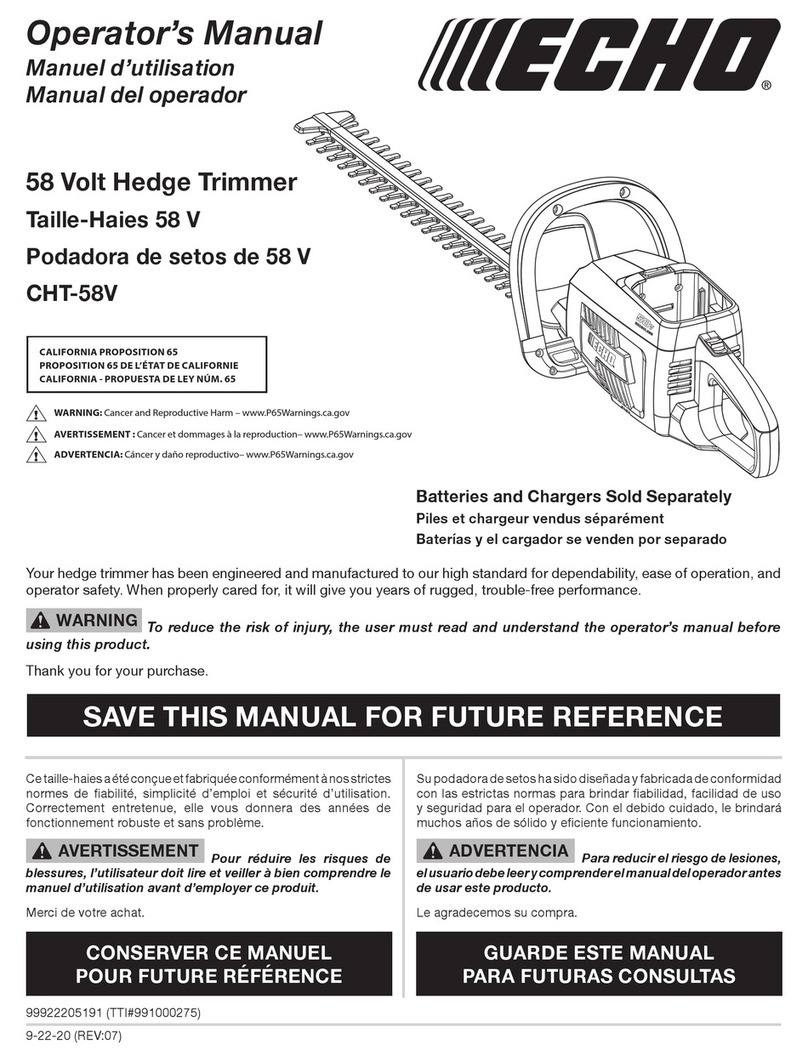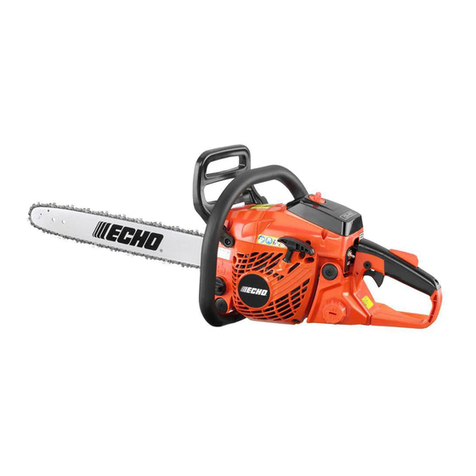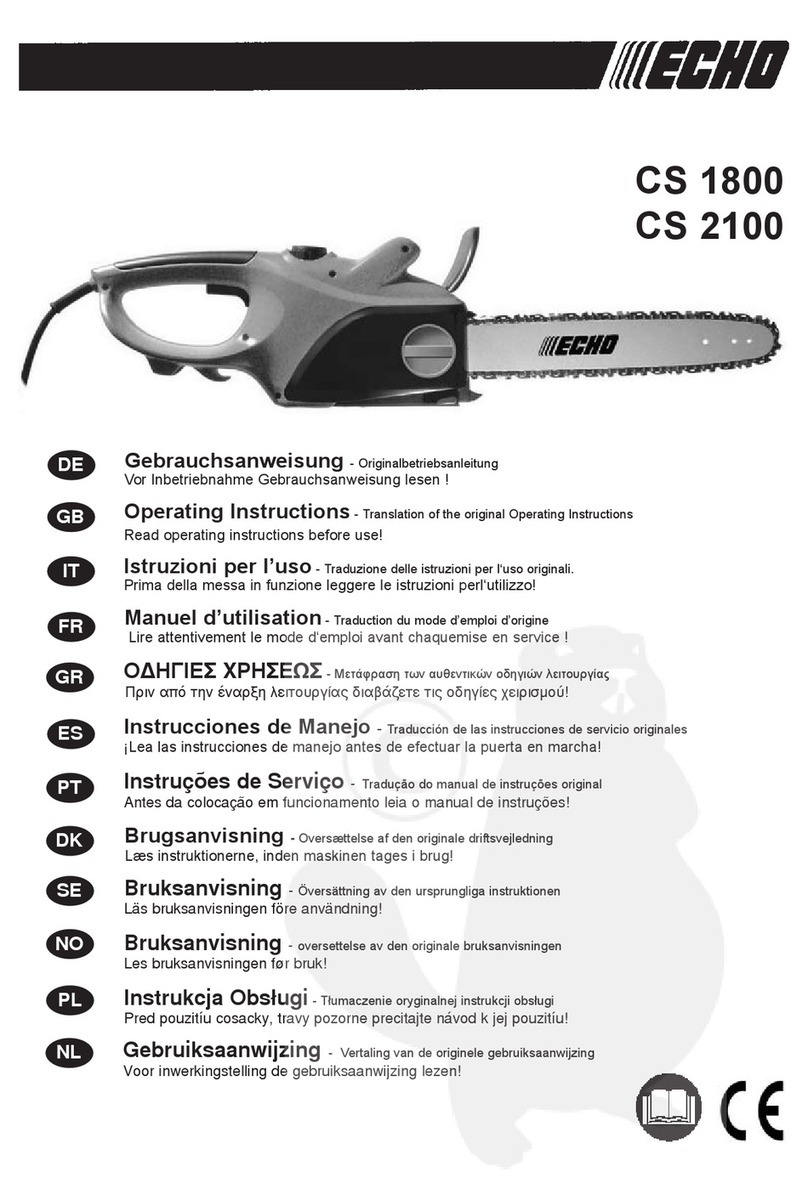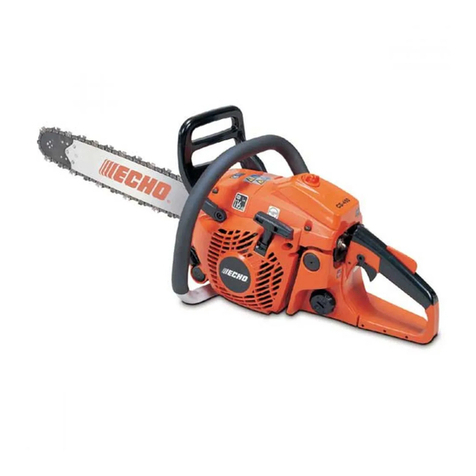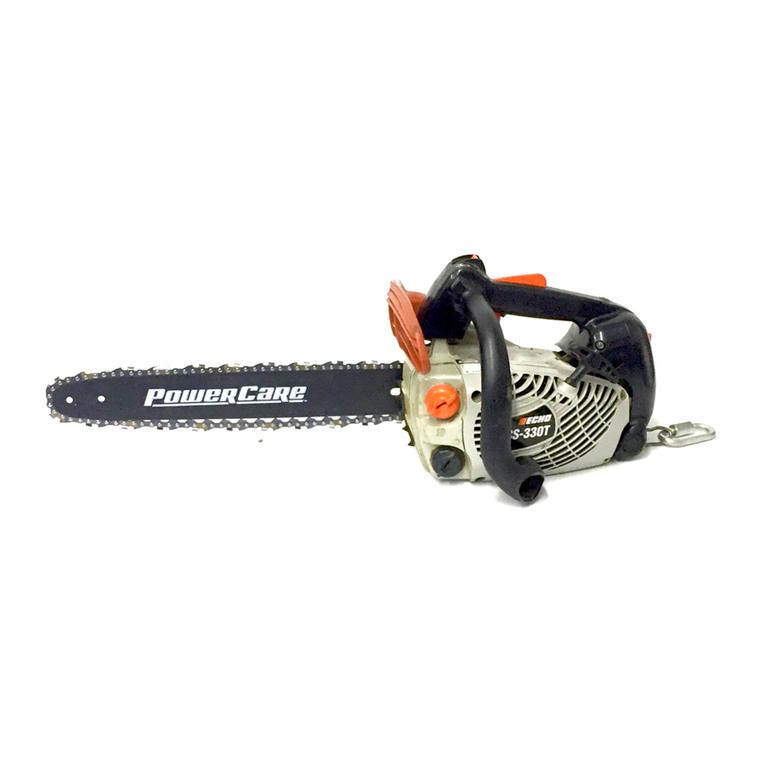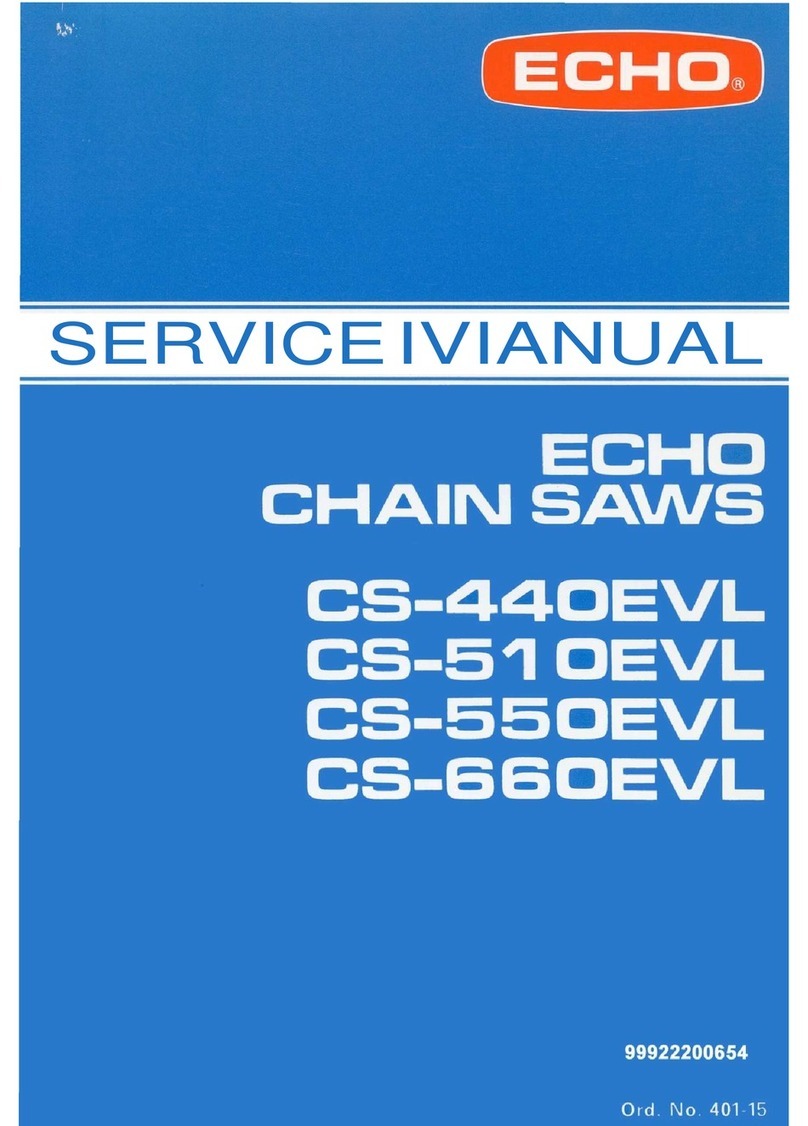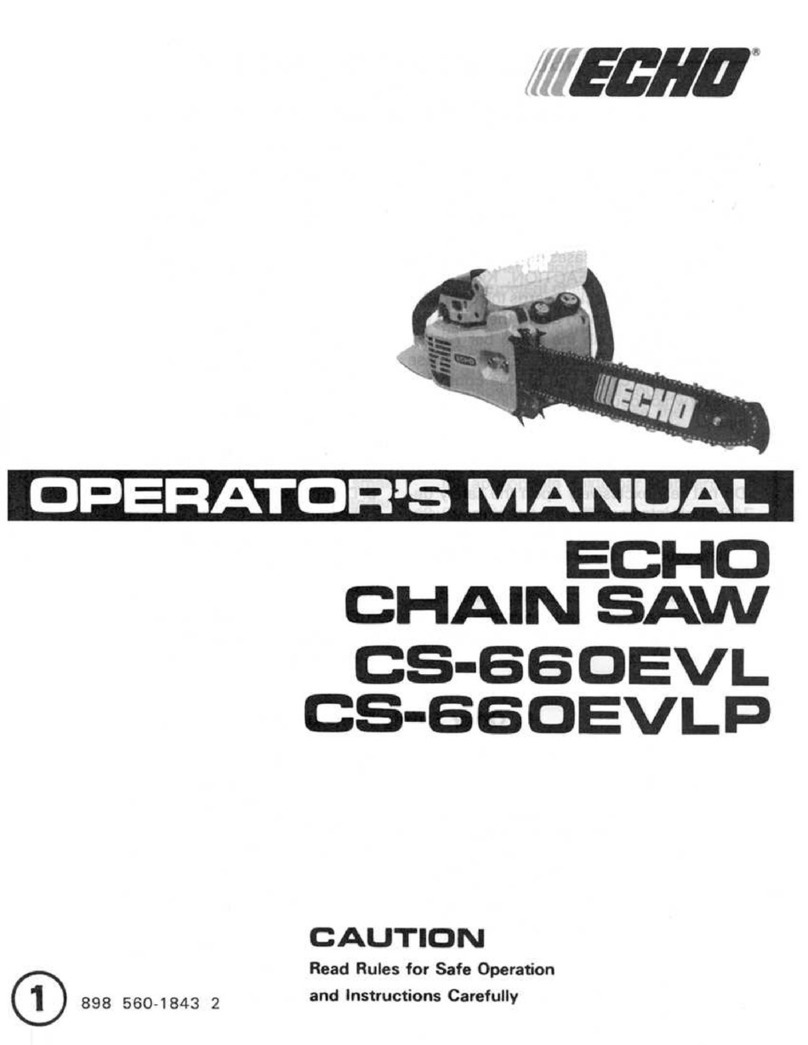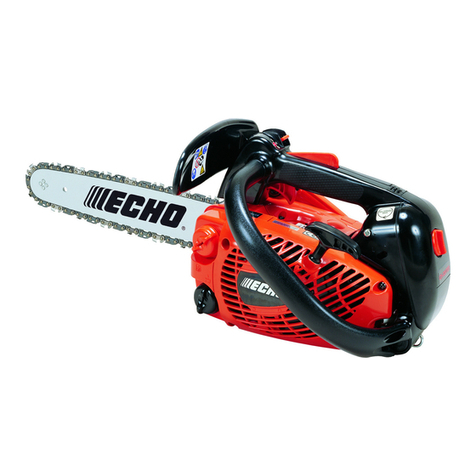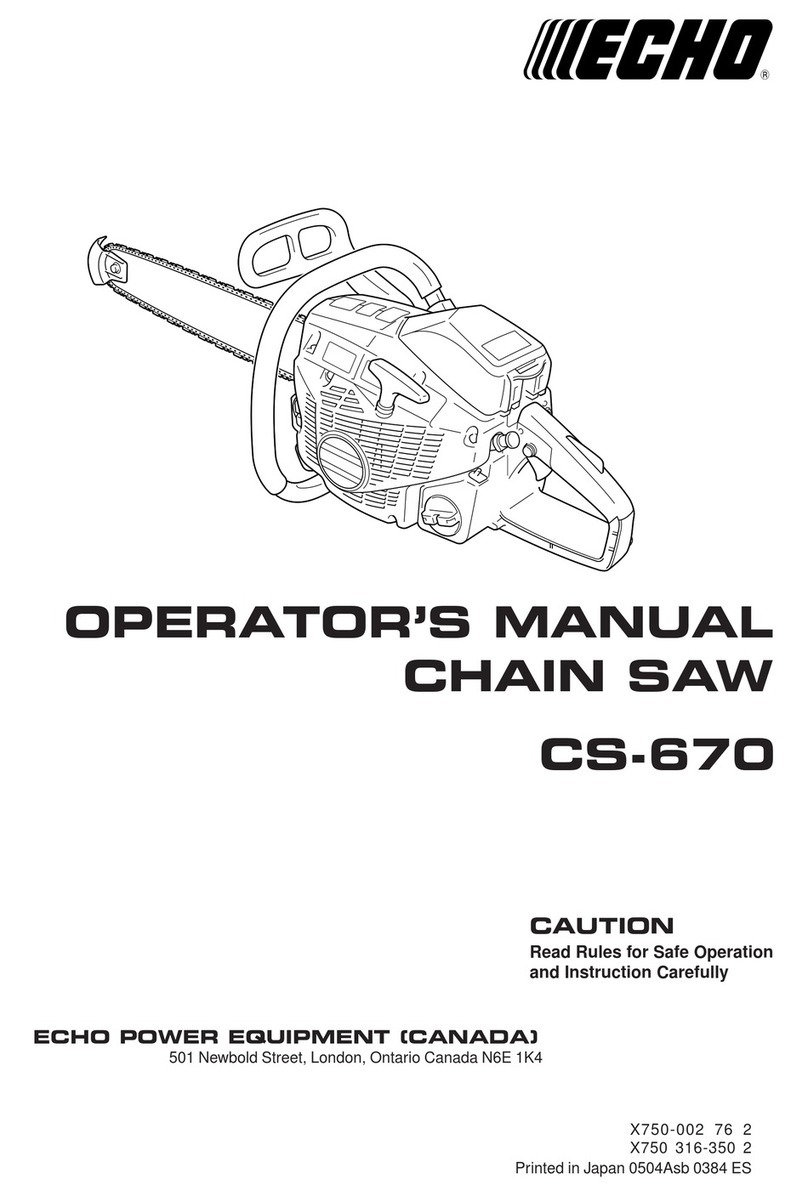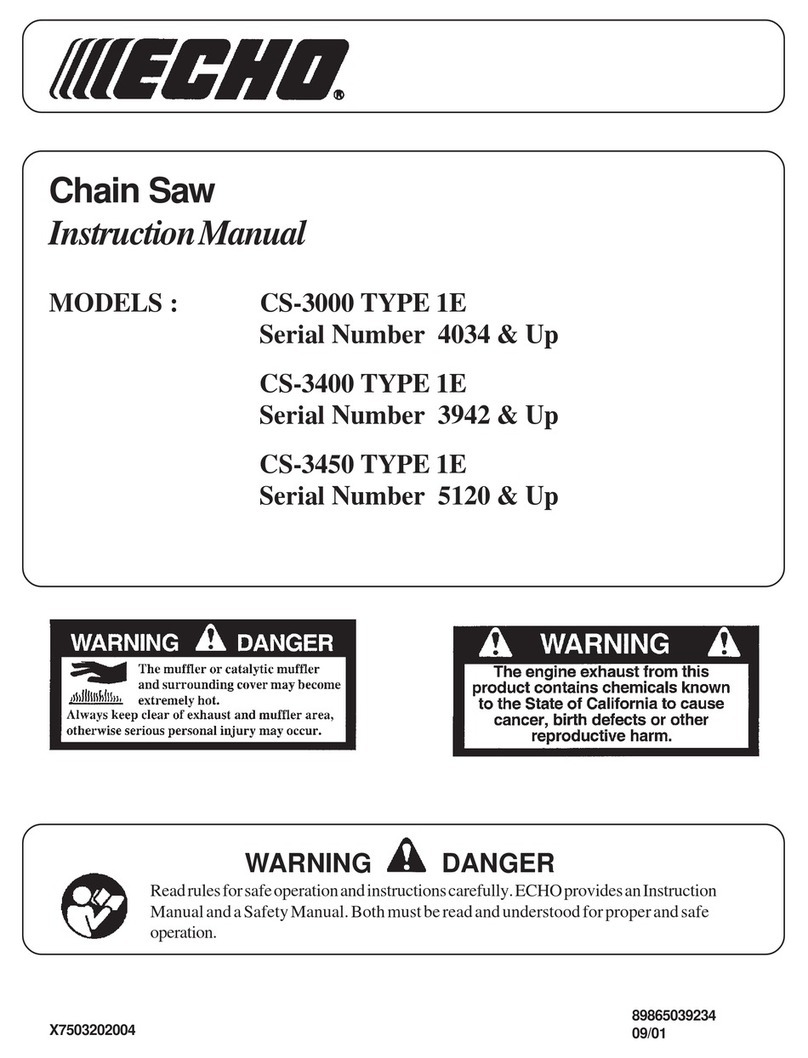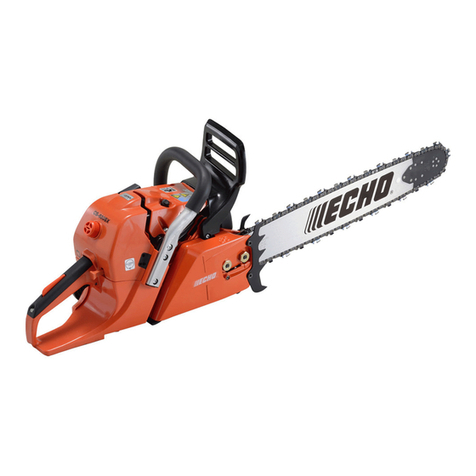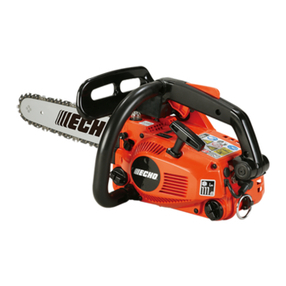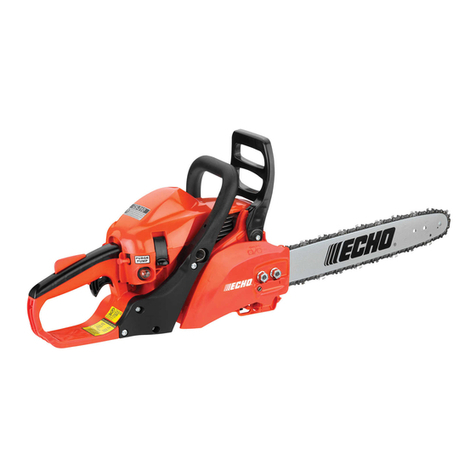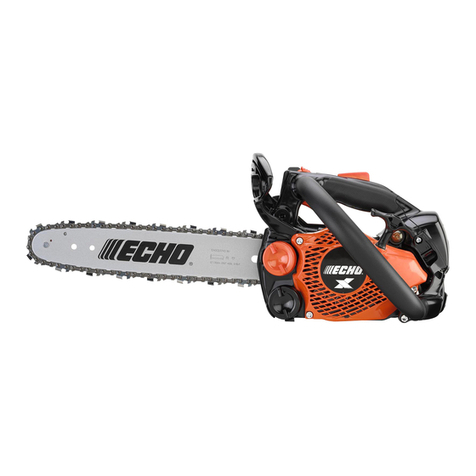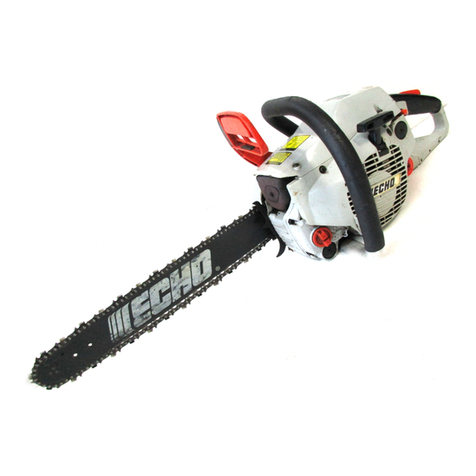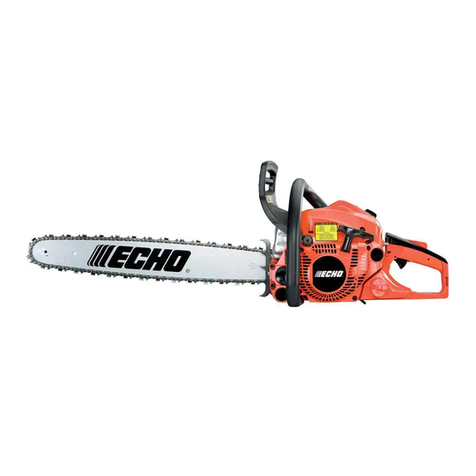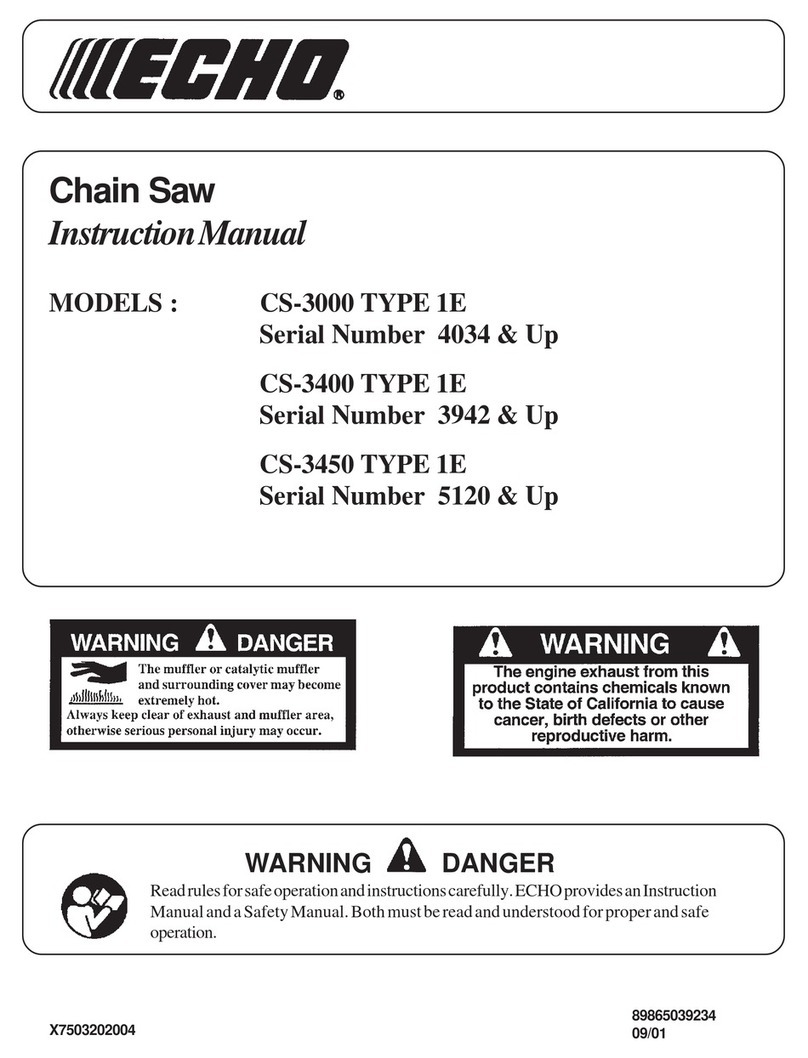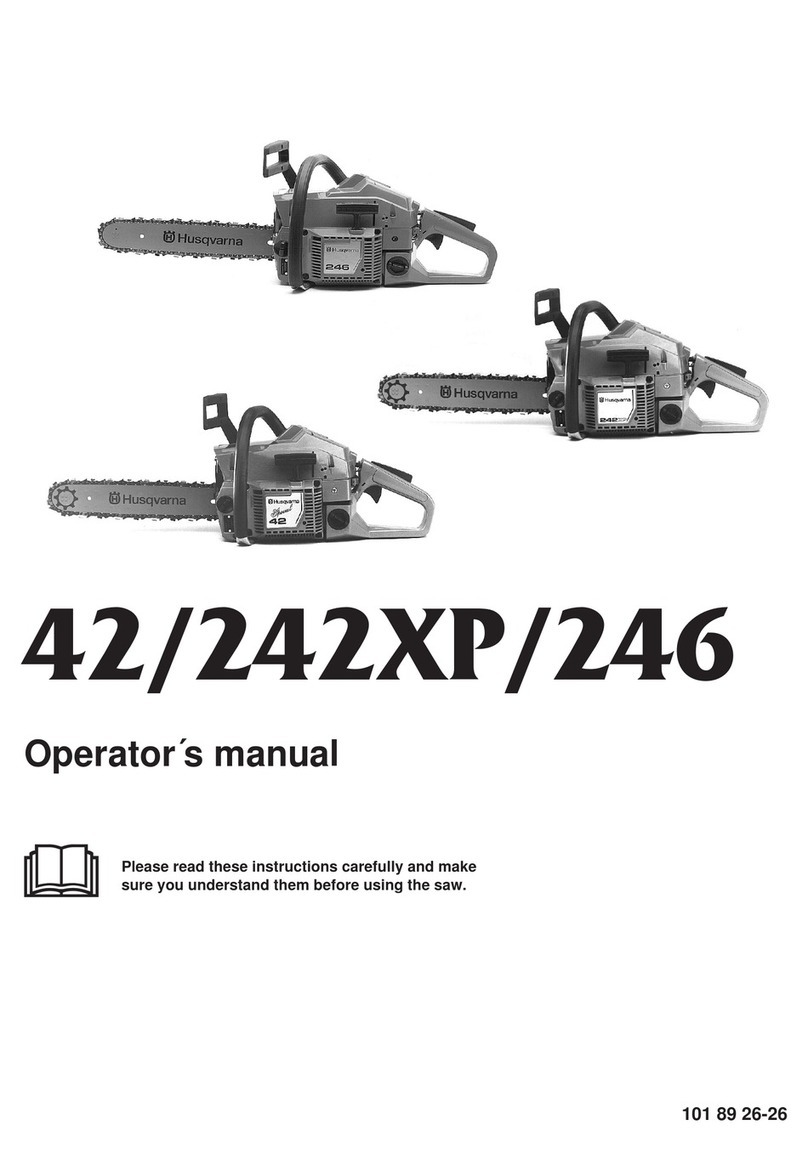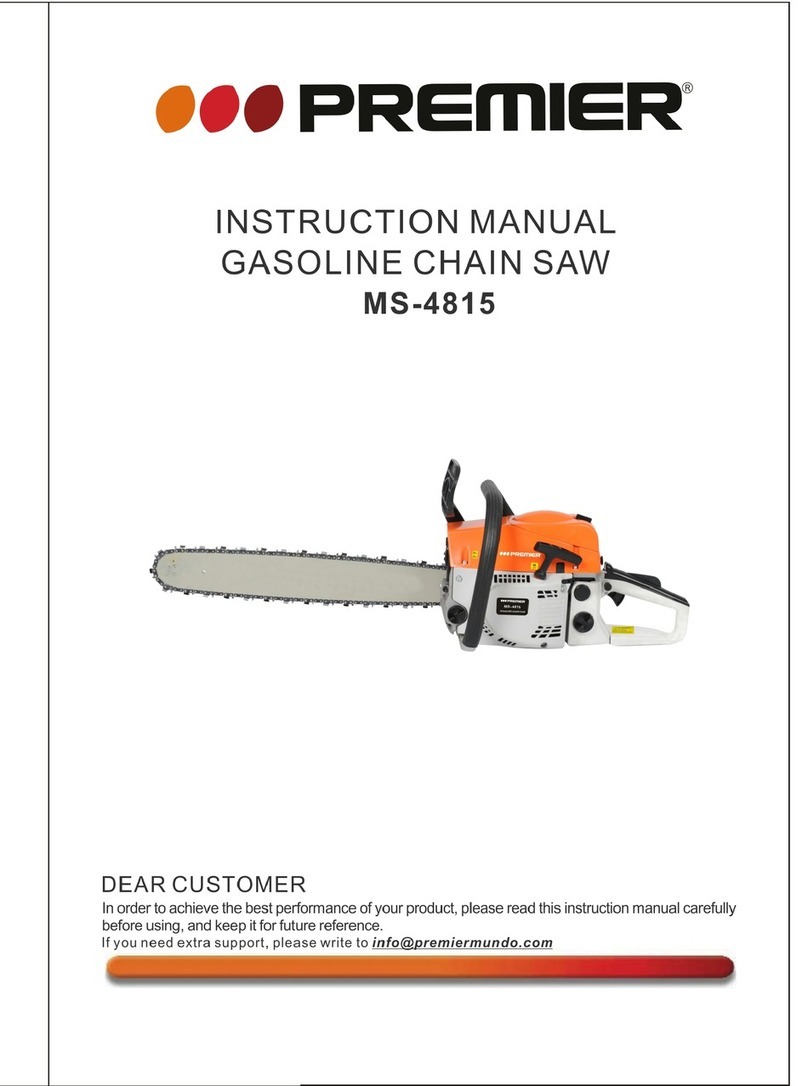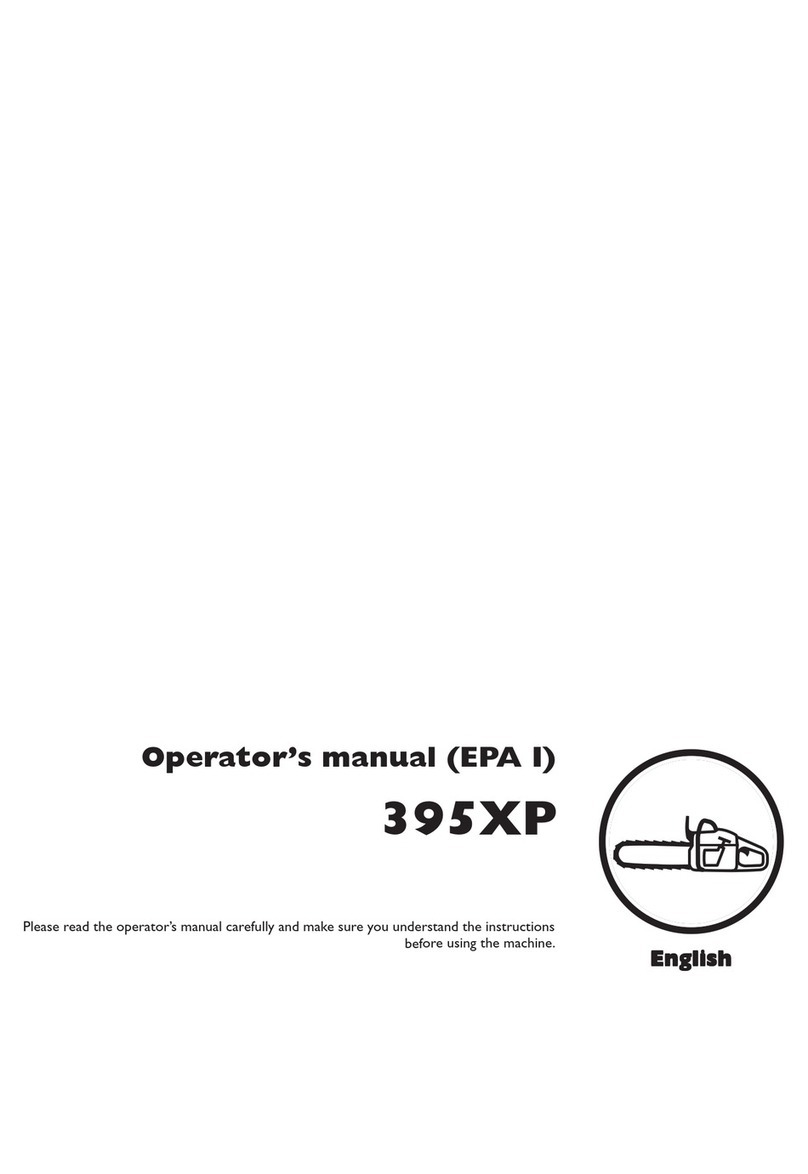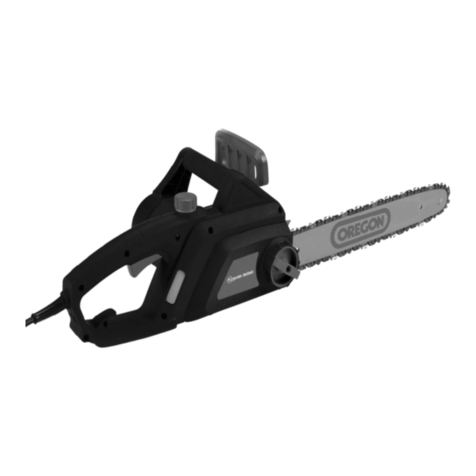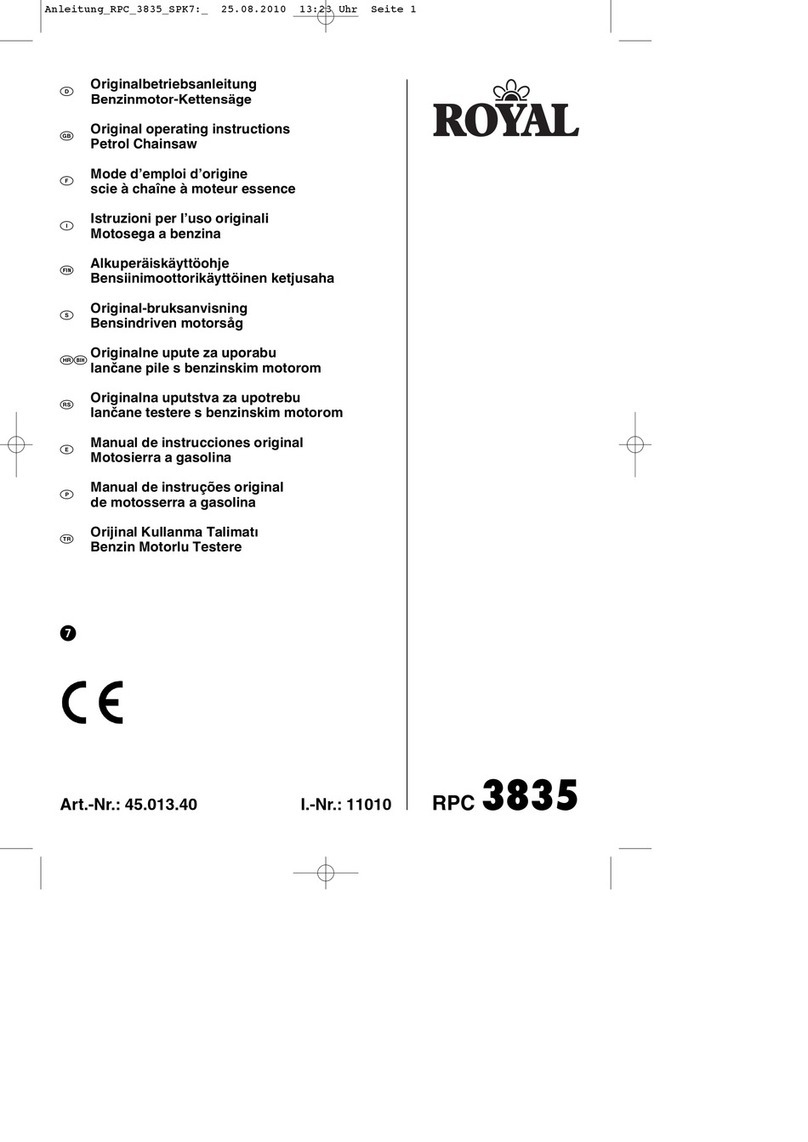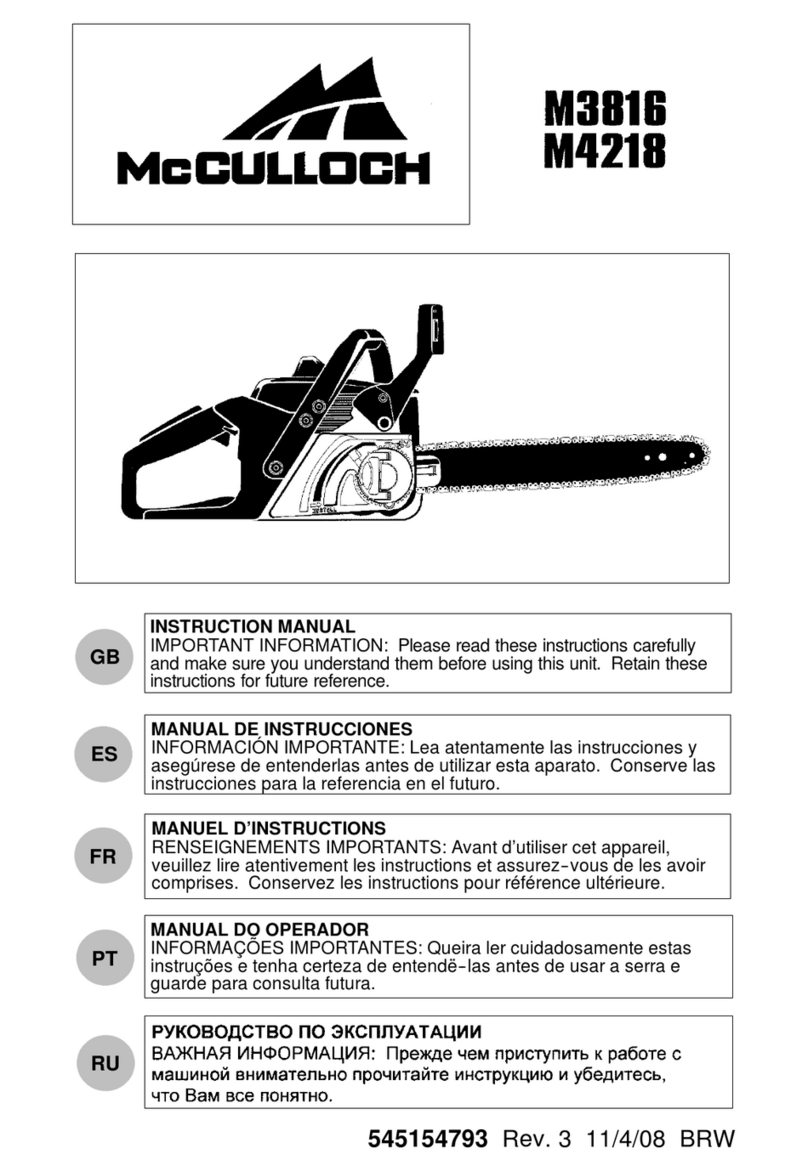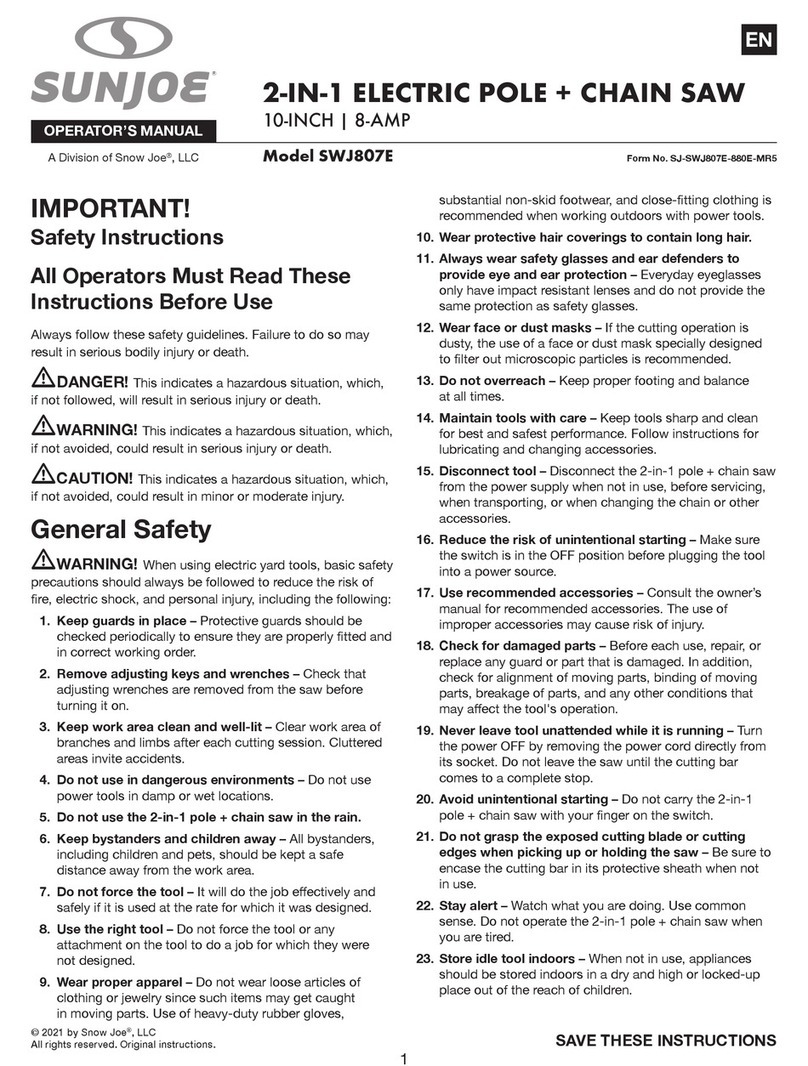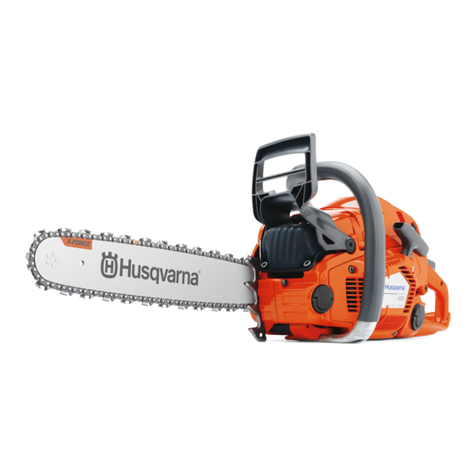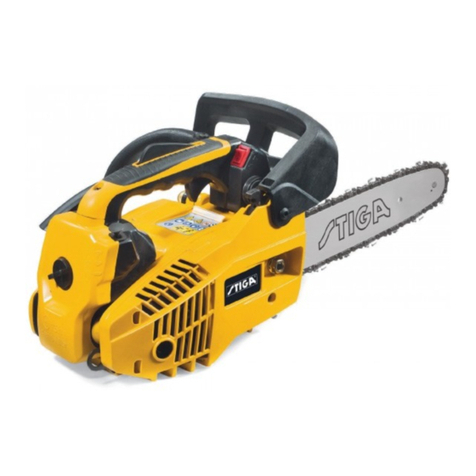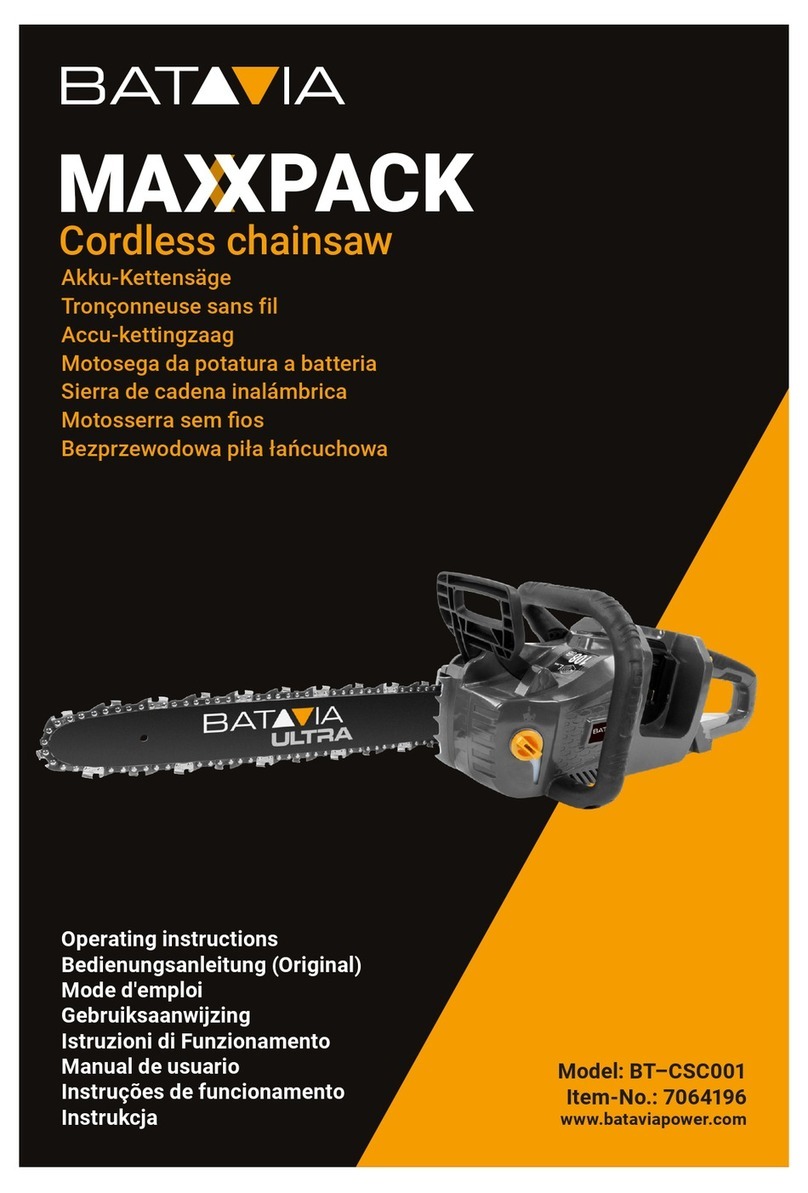2
CS-370
Copyright ©2007 All Rights Reserved.
1. Fatigue causes carelessness. Be more
cautious before rest periods and before
the end of your shift.
2. Personal protective clothing required by
your safety organizations, government
regulations, or your employer should be
used; otherwise, sung fitting clothing,
protective eyewear, safety footwear and
hand, leg and hearing protection should
be worn.
Note: Personal protective clothing
should meet the requirements
of applicable Standards.
3. Before fueling, servicing or transporting
your chain saw switch off the engine. To
help prevent fire, restart your chain saw
at least 3 m from the fueling area.
4. When using a chain saw a fire
extinguisher should be available.
5. When felling, keep at least 2 tree
lengths between yourself and your
fellow workers.
6. Plan your work; assure yourself of an
obstacle-free work area and, in the case
of felling, of an escape path from the
falling tree.
7. Follow instructions in your operator’s
manual for starting the chain saw and
control the chain saw with a firm grip on
both handles when it is in operation.
Keep handles dry, clean and free of oil.
A chain saw should never be carried
with the engine running.
8. When transporting your chain saw, use
the appropriate transportation covers
that should be available for the guide
bar and saw chain.
9. Never operate a chain saw that is
damaged, improperly adjusted, or is not
completely and securely assembled. Be
sure that the saw chain stops moving
when the throttle control trigger is
released. Never adjust the guide bar or
saw chain when the engine operating.
10. Beware of carbon monoxide poisoning.
Operate the chain saw in well-ventilated
areas only.
RULES FOR SAFE OPERATION
11. Do not attempt a pruning or liming
operation in a standing tree unless
specifically trained to do so.
12. Guard against kickback. Kickback is the
upward motion of the guide bar, which
occurs when the saw chain, at the nose
of the guide bar, contact an object.
Kickback can lead to dangerous loss of
the chain saw.
TO AVOID KICKBACK:
(a) Contact of the guide bar tip with any
object should be avoided.
(b) Tip contact may cause the guide bar
to move suddenly upward and
backward which may cause serious
injury.
(c) Always use two hands when
operating the chain saw.
(d) Use a firm grip, thumbs and fingers
encircling the handles.
(e) Don’t overreach.
(f) Avoid cutting above shoulder height.
(g) Follow the manufacture’s instructions
for sharpening and maintenance of
the saw chain.
13. When boring with the chain saw, the
initial cut should be introduced with the
lower part of the nose (tip) until the hole
is sufficiently large so as to introduce the
entire nose (tip) of the guide bar. This
technique should reduce the danger of
kickback.
14. A chain saw is intended for two-handed
use. Serious injury to the operator,
helpers and/or bystanders may result
from one-handed operation.
CAUTION
A. Allow your chain saw to cool before
refueling, and do not smoke while
refueling.
B. Do not allow other persons or animals
close to running chain saw or close to
where a tree is being felled.
C. Use extreme caution when cutting small
size brush and saplings because
slender material may catch the saw
chain and be whipped toward you.
D. When cutting a limb that is under
tension is alert for spring-back.
